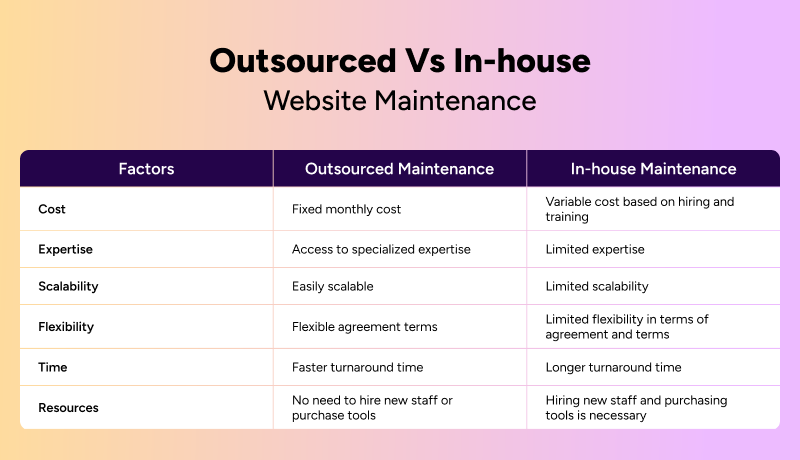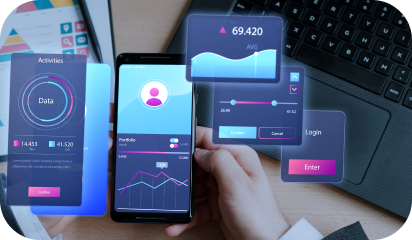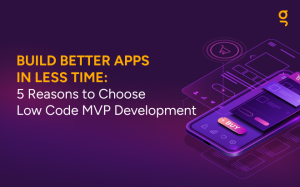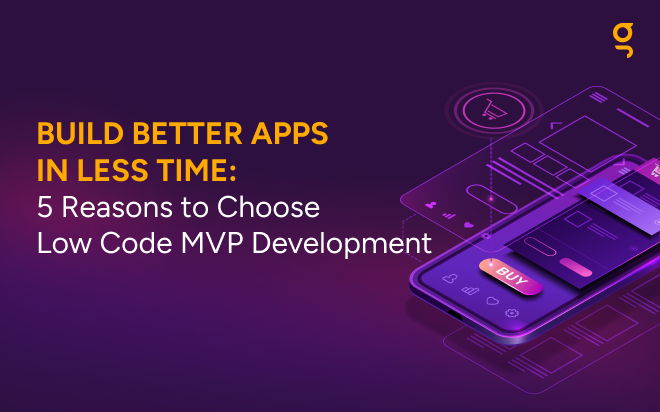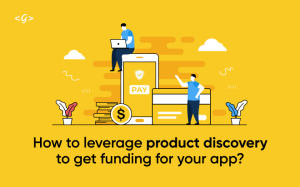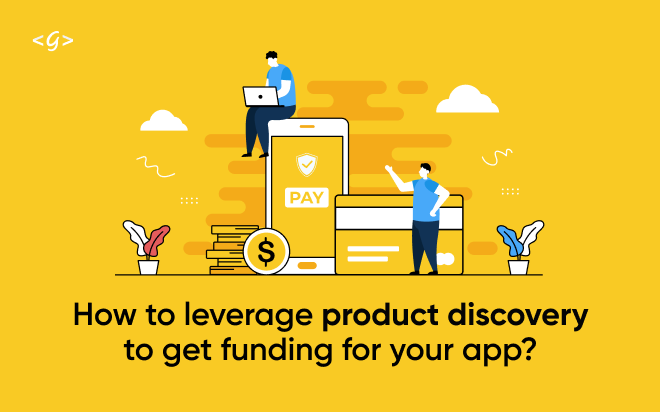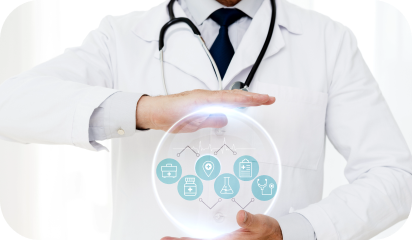According to Moneyzine report of 2023, 47% of startups eventually fail due to a lack of funding.
These startups struggle to secure funding due to the lack of a compelling business model, insufficient market research, inexperienced team, and an absence of demonstrated traction.
To overcome hurdles and increase chances of success, startups need to effectively strategize their approach for securing investment. This involves accurate forecasting of potential challenges and demonstrating their value to potential investors.
Investors evaluate various aspects when considering a startup, which include the uniqueness and practicality of the solution it provides, market size, growth potential, and industry trends.
The team’s strength and their ability to set their startup apart is key, as is their growth strategy and the technology they leverage. A financially sound business model and clear use of investment funds are also important considerations.
But for tech startups, it’s not just about investing in an idea.
Investors seek proof of a viable market, a robust team, and a scalable business model. A working product that shows the startup’s capabilities is crucial. This is often achieved through MVP development for startup products, and then presented as a Minimum Viable Product (MVP).
While an MVP isn’t directly a selling point, it surely facilitates the process of pinpointing the unique aspects of the product or service. This, in turn, can enhance the startup’s prospects in attracting the required investment.
Is Your Startup Set for Funding? Indicators of Investment Readiness
When it comes to seeking investment for your startup, timing is crucial. You want to make sure you’re raising and utilizing the funds for growth. So, what does it mean to be ready for investment?
Let’s explore some key indicators that can help determine if your startup is prepared to seek funding.
- Clear Business Model: Define how your startup will generate revenue, understand your target customers, and outline your cost structure.
- Problem-Solution Fit: Validate that there is a real problem to solve and that your solution is appealing to customers.
- MVP or Prototype: Showcase a minimum viable product or prototype to demonstrate your capability of bringing ideas to life.
- Initial Traction: Show evidence of market interest and acceptance through user sign-ups, website traffic, or other relevant metrics.
- Strong Team: Have a committed team with diverse skills necessary for your business’s success.
- Scalable Growth Plan: Develop a plan for how your startup can grow and articulate how the investment will fuel that growth.
- Financial Projections: Present a financial forecast that outlines expected income, expenses, and cash flow for the coming years.
By considering these pointers and ensuring your startup meets these readiness indicators, you can position yourself for a successful investment journey. Remember, finding the right investment partner goes beyond the funding itself, as they can provide valuable guidance and support for your startup’s growth.
When Is The Right Time To Seek Investment?
Determining the right time to seek investment for your startup can depend on various factors, including the nature of your business, your stage of development, and your specific funding needs. Here are a few scenarios that often indicate a suitable time to seek investment:
- Development of a Minimum Viable Product (MVP):
Having a functional MVP or prototype demonstrates that you have progressed beyond the conceptual stage and can showcase your idea’s potential to investors.
- Early Traction and Milestones:
Investors are more likely to be interested in startups that have achieved some level of traction. This can include user sign-ups, positive feedback, initial sales, or partnerships that validate your business model and market potential.
- Scalability and Growth Potential:
Investors seek startups that have the potential to scale rapidly and generate significant returns on investment. It is crucial to have a well-defined growth plan and strategy that outlines how the infusion of funds will drive your startup’s expansion.
- Demonstrable Team Capabilities:
A strong and capable team is a critical factor in attracting investment. Investors look for teams with relevant expertise, industry knowledge, and the ability to execute the business plan effectively.
- Financial Preparedness:
Before seeking investment, ensure you have a clear understanding of your financials, including revenue projections, cost structures, and cash flow management. This demonstrates your financial preparedness and ability to effectively utilize the investment funds.
Remember, seeking investment should align with your business goals and growth plans. It is essential to evaluate your startup’s readiness based on these indicators and seek investment when you have a compelling value proposition, demonstrated market demand, a viable product, and a solid plan for growth.
Here’s an example of a popular startup that mentions how an MVP could have changed its fate.
Argo AI serves as a prime example of a tech startup that managed to secure substantial funding early in its life but ultimately faced significant challenges due to a lack of product-market fit and market validation. Co-founded in 2016 by veterans of Google and Uber automated driving programs, Argo AI sought to build software, hardware, maps, and cloud-support infrastructure to power self-driving vehicles.
| Argo AI | |
| Service | Development of software, hardware, maps, and cloud-support infrastructure for self-driving vehicles |
| Problem | Couldn’t monetize their technology effectively. Strategic shifts due to new leadership at key backers. Expensive development and implementation of autonomous vehicle technology. Couldn’t secure a sustainable position in an emerging industry. Absence of a product to validate the market and business model. |
| Funding | Over $3.6 billion from Ford and Volkswagen |
| Market Validation & Fit | Lack of clear business model for autonomous transportation serviceability to bring a successful autonomous vehicle product to market |
| Technology | Investment in LiDAR imaging technology Despite advantages in LiDAR technology, unable to leverage it effectively for a successful AV product |
| Financial Performance | Net loss: Posted an $827 million net loss for the third quarter |
| MVP Approach and Business Model Validation | It’s possible that an MVP approach could have helped Argo AI better validate its product-market fit and business model. Instead of making massive bets on specific technologies and aiming for a full-fledged autonomous vehicle, a smaller, more focused product offering that targeted a specific customer need or market niche might have helped Argo AI gain the market traction and validation needed to convince investors of its viability. |
This is a powerful illustration of the importance of an MVP when raising investment for a startup, as it offers a way to validate a product idea and business model with real market feedback before committing large amounts of resources.
Putting Investment To Work: How Funds Can Be Utilized
By strategically utilizing the investment, startups can fuel growth, enhance operations, drive marketing initiatives, bolster product development, and strengthen overall business capabilities. Understanding how funds are deployed across different areas is key to maximizing the potential impact of investment and setting the stage for sustainable growth and success.
In the ideal scenario, funds should be infused when your startup is in a position to utilize them effectively across the following key areas:
Product Development & R&D
- Software and Tools
- Talent Acquisition
- Prototyping and Testing
- Research
Marketing & Customer Acquisition
- Advertising
- Public Relations
- Content Marketing
- Sales Team
Scaling Operations
- Physical Expansion
- Operational Staff
- Inventory and Supply Chain
Legal & Compliance
- Legal Counsel
- Patents and Trademarks
- Regulatory Compliance
Working Capital
- Day-to-Day Operations
- Emergency Buffer
- Supplier and Vendor Payments
What Are The Investment Decision Criteria?
When investors evaluate a business for potential investment, they consider a number of decision criteria that help them determine the likelihood of the investment generating substantial returns. Investors assess a variety of factors when considering an investment in a startup, particularly when it’s a technology-driven enterprise.
Here are the key aspects they look for:
- Speed of Development:
Investors appreciate teams that can quickly turn an idea into a viable product. The ability to swiftly execute signals a team’s efficiency, dedication, and competence.
- Financial Prudence:
Investors want to see effective financial management. They prefer startups that use their funds wisely and can deliver results within a reasonable budget.
- Focus on Essential Features:
Investors value startups that understand their target audience’s needs and prioritize features that cater to these needs. A cluttered product with unnecessary features can confuse customers and hamper adoption.
- Receptiveness to Feedback:
Startups that are open to constructive criticism and can adapt their product based on user feedback tend to be more successful. Investors seek this adaptability and customer-centric approach.
- Market Validation:
Concrete evidence of market demand for a product or service is crucial. Investors need proof that the startup’s offering has the potential for growth and profitability.
- Customer Base:
Early traction in terms of a growing customer base is a strong indicator of a startup’s potential. It’s one thing to believe in a product’s potential and another to see customers actually using and benefiting from it.
- Risk Management:
Startups that take calculated risks and have plans to mitigate potential downsides are more likely to secure investment. Investors prefer to back ventures that balance ambition with caution.
Now, how can a startup demonstrate these qualities effectively? This is where a Minimum Viable Product (MVP) comes into play.
One example of a well-known startup that successfully utilized an MVP to secure further funding is Instagram:
When Instagram launched in 2010, it started as a simple MVP—an iPhone app for sharing photos with filters and basic social features. The MVP gained early traction and quickly attracted millions of users.
The founders used this initial success and user feedback to secure $500,000 in seed funding from venture capitalists, including Andreessen Horowitz.
The funding helped Instagram scale its operations, enhance the app’s features, and expand its user base. Eventually, Instagram was acquired by Facebook for $1 billion in 2012, showcasing the significant success that stemmed from starting with an MVP.
MVP: Your Secret Weapon for Raising Investment
Investors highly value the market validation that comes with an MVP. By launching an MVP and gathering real user feedback, startups can demonstrate early traction, user engagement, and positive market response. This validation provides crucial evidence of the product’s viability and attractiveness to potential customers.
Investing in a business without a minimum viable product (MVP) is riskier. When there is no MVP, investors have to rely on assumptions and projections, which may not accurately reflect what customers want or how the market will respond. This lack of concrete validation makes it more uncertain and potentially less favorable for investors.
However, building an MVP for startups helps you mitigate this risk by offering a proof-of-concept. It allows investors to see firsthand how the product is received in the market, assess its unique value proposition, and evaluate its potential for widespread adoption. This tangible evidence significantly reduces uncertainty and provides a stronger basis for investment decisions.
An MVP helps startups exhibit these investor-preferred qualities:
- MVPs are typically developed and launched within about 5 weeks, but the timeframe can vary based on product complexity.
- Developing an MVP is budget-conscious, usually requiring an investment of around $10,000 to $15,000 for digital products like apps or websites.
- MVPs focus on delivering essential features that address the primary needs of the target audience, often prioritizing 1-3 key features that solve customer problems effectively.
- MVPs gather early user feedback, usually from a few dozen to a few hundred users, depending on the product and market size.
- Launching an MVP allows entrepreneurs to validate market demand, aiming for a few hundred to a few thousand active users or customers within the first few months.
- MVPs help establish an early customer base, attracting a few hundred to a few thousand initial customers, depending on the product and market.
- MVPs minimize resources and time in the initial phase, reducing financial and operational risks. This can potentially save significant costs by validating the product concept before full-scale development.
Investments can be utilized in many areas such as marketing, product development, operations, team expansion, and even research and development. But it’s not just about where the money is used, but also when it’s raised.
One successful example of a startup leveraging its MVP to secure good investments is the story of Slack. Slack, known initially as “Glitch,” began as an internal communication tool for a gaming company called Tiny Speck. However, the founders recognized its potential beyond their initial gaming project and decided to pivot. Take a look at how an MVP was turned to be a successful team communication platform.
| Slack | |
| Initial Idea and MVP | Origin: Developed as an internal communication tool for a gaming company, Tiny SpeckMVP Focus: Simplifying team communication and collaboration with channels, direct messaging, file sharing, and integration with productivity tools |
| Target Audience: Developers and tech community | (Launch and Market Response)Public Launch: August 2013 Sign-ups: Approximately 8,000 within the first 24 hours |
| User Growth | Reached 1 million daily active users within six months |
| Funding | Raised over $1.4 billion in several funding rounds |
| Current Status and Impact | Established as a leading workplace communication platform |
| User Base | Millions of daily active users globally |
| Key Success Factors | Market Recognition: Identified a need for an intuitive team communication toolValidation: Swift market validation and user adoption of the MVPInvestment Attraction: Secured substantial investments based on MVP success and potential |
Why Investors Prefer MVP Before Investing In Tech Startups?
Investors can gain confidence in the startup’s traction, product-market fit, risk mitigation, scalability, and efficient use of capital. MVPs provide valuable insights that align with investors’ goals of maximizing returns while minimizing risks. Here is the list of specific factors that investors look for when investing in any tech startup:
Evidence of Traction:
- Launching an MVP demonstrates early user adoption and market interest.
- Provides tangible proof of a product’s potential to attract customers.
- Shows engagement and validates market demand.
Validation of Product-Market Fit:
- MVPs allow startups to test and validate their value proposition.
- Gathering user feedback helps refine the product to meet customer needs.
- Reduces the risk of investing in a product that may not resonate with the market.
Risk Mitigation:
- MVPs provide real-world data for informed decision-making.
- Investors can assess the startup’s progress and market response.
- Mitigates uncertainty and reduces risk associated with investing in unproven concepts.
Scalability and Growth Potential:
- MVPs offer insights into the startup’s scalability and growth potential.
- Showcases repeatable customer acquisition process and positive user feedback.
- Demonstrates the startup’s ability to capitalize on market opportunities.
Efficient Use of Capital:
- MVP development is cost-effective and optimizes resource allocation.
- Demonstrates the startup’s ability to achieve milestones with limited funding.
- Shows the startup’s potential for profitability and delivering a return on investment.
Ideal Stages For Kickstarting MVP Development In A Startup
Determining the right stage to kickstart your MVP development for startup is crucial. It sets the foundation for validating ideas, gathering user feedback, and refining the product or service. By identifying the ideal stages to begin MVP development, startups can maximize their chances of success and make informed decisions before seeking external investments. Here are several key stages that are considered ideal for kickstarting MVP development in a startup’s journey.
Idea Validation Stage:
- The earliest stage of a startup is where founders have a conceptual idea but need to validate its feasibility. Developing an MVP at this stage allows founders to test their assumptions, gather user feedback, and validate the market need for their product or service. It helps refine the idea and build a solid foundation for further development.
Early Product Development Stage:
- Once the initial idea has been validated, startups can enter the early product development stage. At this point, the basic concept and target audience are defined, and the focus is on building a minimum viable version of the product. Developing an MVP helps startups gain early traction, gather user insights, and iterate on the product to refine its features and functionalities.
Pre-Launch Stage:
- This stage occurs just before the official launch of the startup’s product or service. Developing an MVP in this phase allows startups to gather feedback from a select group of beta users or early adopters. This feedback can help fine-tune the product, address any potential issues, and create a positive user experience before the full-scale launch.
Market Entry Stage:
- Startups that have validated their product-market fit and are ready to enter the market can utilize MVP development to gain a competitive advantage. By launching an MVP with a focused set of features, startups can penetrate the market quickly, gather user feedback, and make iterative improvements based on real-world usage.
Expansion and Scaling Stage:
- Startups looking to expand their customer base or enter new markets can leverage MVP development to test market demand and gather insights. By creating a streamlined version of their product tailored to the target market, startups can validate the demand and make data-driven decisions for scaling their operations.
Secure Investment for Your Startup: Build an MVP that Captivates Investors!
For startup founders, early-stage entrepreneurs, and investors seeking insights into startup potential, developing a Minimum Viable Product (MVP) can be a critical step toward securing investment. An MVP allows you to validate your business idea, gather user feedback, and showcase the potential of your startup.
However, it’s important to remember that building an MVP for startups is just the beginning. It serves as a starting point to refine your product, gather market insights, and pave the way for building a successful and sustainable business.
If you’re looking to develop an MVP for your startup, consider partnering with experienced developers and designers who can guide you through the process. Galaxy Weblinks, serves as a full-cycle web and mobile app development company for startups from ideation to launching. We are committed to supporting startup founders and early-stage entrepreneurs at every step of their journey.
Whether you’re creating a social media platform, an e-commerce website, or a mobile app, we have the expertise to transform your idea into a reality. Reach out to us today to discuss your startup aspirations and discover how we can help you bring your MVP to life.




